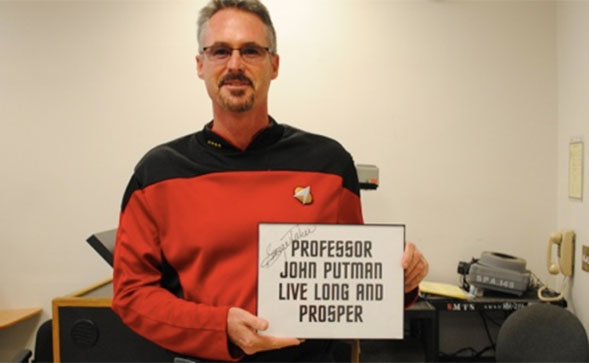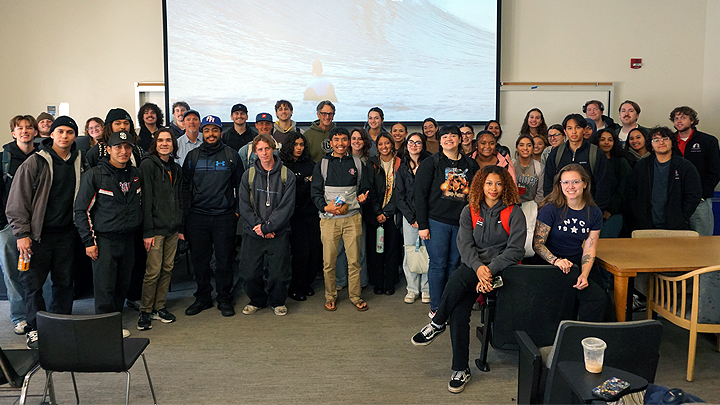Off the Beaten Course: HIST 537
Star Trek, Culture, and History explores the cultural phenomenon of Star Trek.

Off the Beaten Course is a series that delves into SDSU's course catalog to share unique and non-traditional classes.
Course title: Star Trek, Culture, and History
Professor: John Putman
John Putman is a professor in San Diego State University's Department of History. He is a historian of the modern American West (late 19th and 20th centuries), primarily focusing on California and the Pacific coast states and is also a member of the University Senate and Intercollegiate Athletic Council.
1) What inspired you to create this course?
As I became more engrossed and interested in Star Trek, I realized that the series had something to say about American society. Not only did I hope that students would gain a greater appreciation for Star Trek, but I also saw it as a different and unique way to examine post-World War II history in the classroom.
2) What can students expect to learn from this course?
First and foremost, I want them to learn more about postwar American society and history. I remind them that this is a history course and the larger history we study and examine is the central part of this. Star Trek is a vehicle from which to do this. In addition, I hope that they learn how popular culture — whether television, film, or music — can offer insight into the values, concerns, hopes and anxieties of society at the time the television series or film was produced.
3) What makes this course different from similar courses?
This course closely resembles history of film classes in that it explores how the Star Trek episodes are situated in a particular historical context. Yet, few courses examine television series, especially a singular franchise that spans nearly 50 years.
This allows the class to explore a longer historical period and see how society has evolved and changed over time. Students are exposed to episodes from the five Star Trek series from the Original Series in the 1960s to Star Trek Enterprise that ended in 2005.
4) Is there one day on the syllabus for this course you most look forward to? If yes, why?
While there are particular episodes we watch in class that I like more — especially a Star Trek Deep Space Nine episode called “Far Beyond the Stars” that explores race in America — I would say the first day of class might be my favorite.
On this day I get to learn about the students’ knowledge and engagement level with Star Trek as well as make my case for the usefulness of Star Trek in studying recent United States history.
5) What’s your favorite thing about teaching this course?
I really enjoy watching students gain an appreciation for Star Trek and how they learn to dissect episodes and not just watch them for their entertainment value. Near the end of the course I ask them — many who had limited knowledge of Star Trek beyond the recent movies — how they feel about it now. Almost all admit that they never really took the show seriously before, but now do.
6) Any other thoughts?
I should admit that my office is decorated with Star Trek paraphernalia, including a phone in the shape of the Star Trek Enterprise starship, a picture of me with two of my favorite Star Trek captains taken at the annual Star Trek Convention in Las Vegas, and various posters and toys.
Have an interesting course? Contact the SDSU Marketing and Communications team to share your story.


